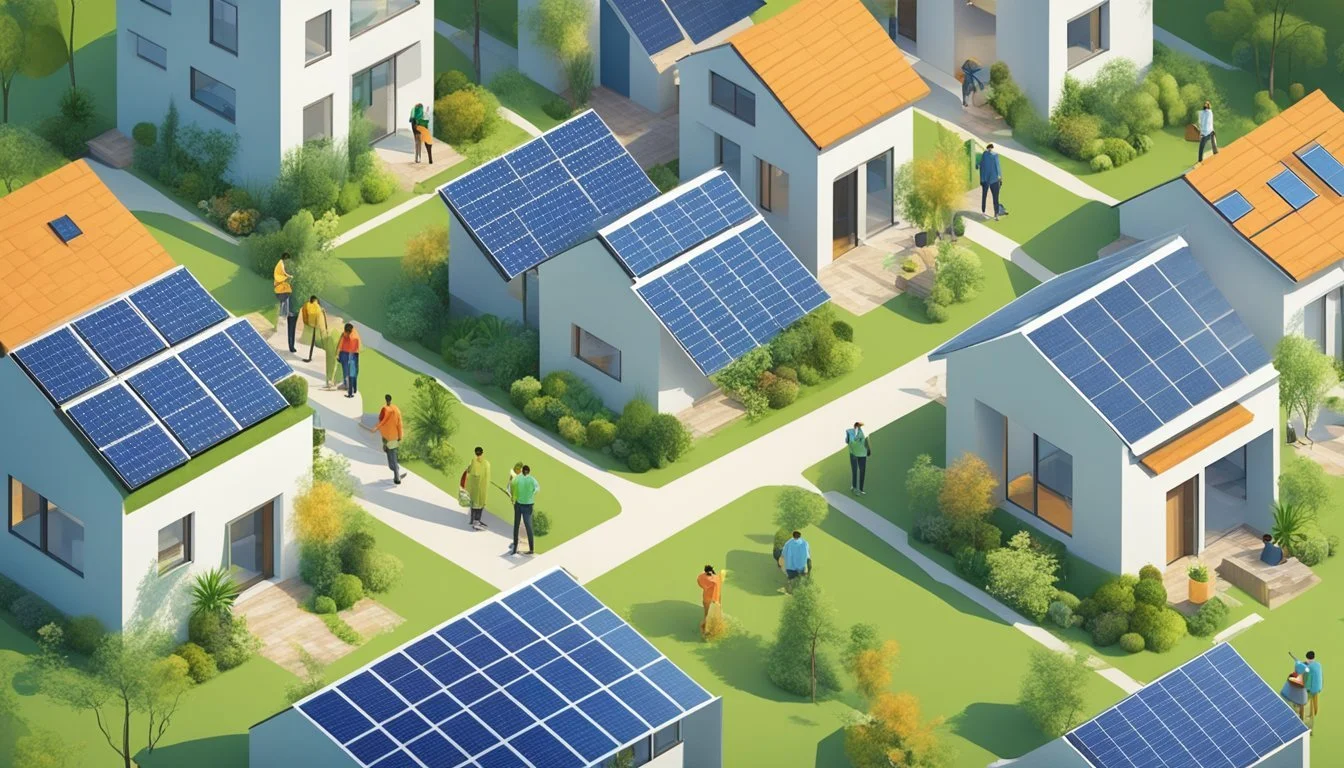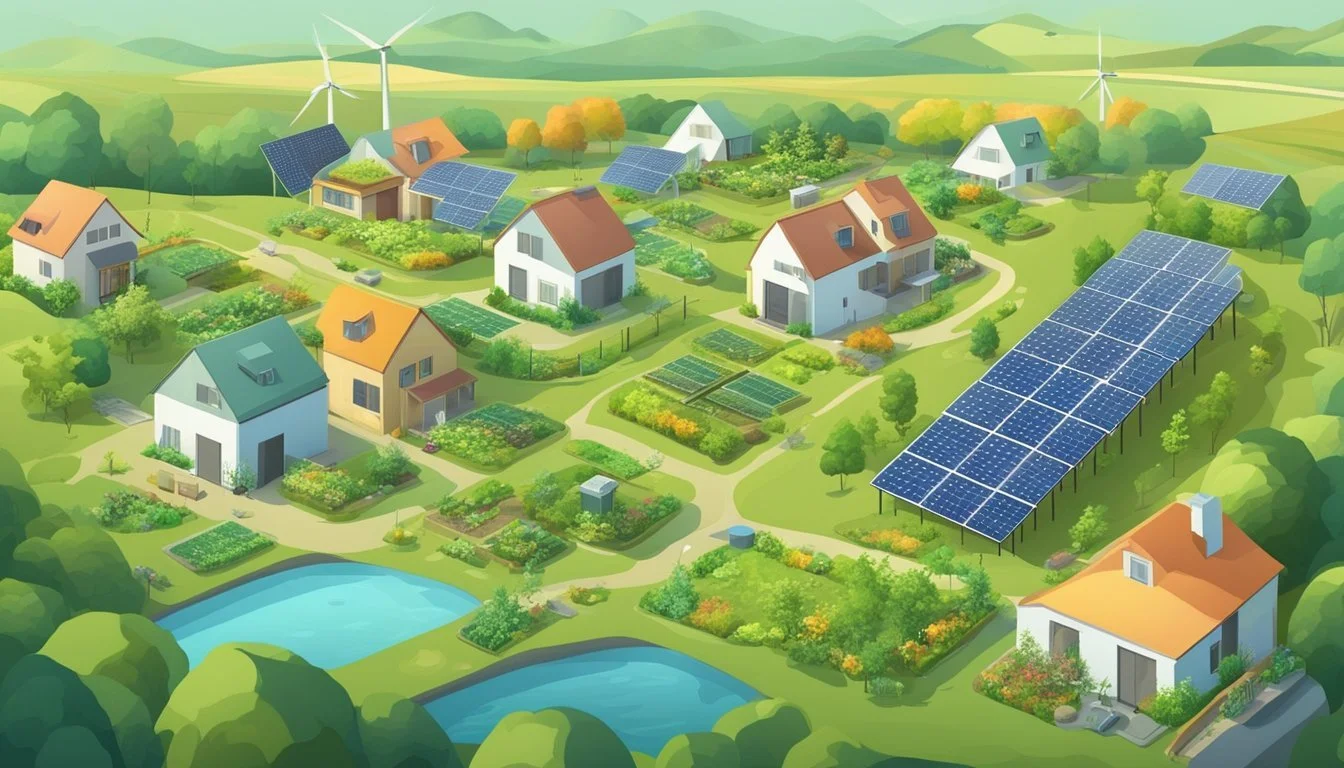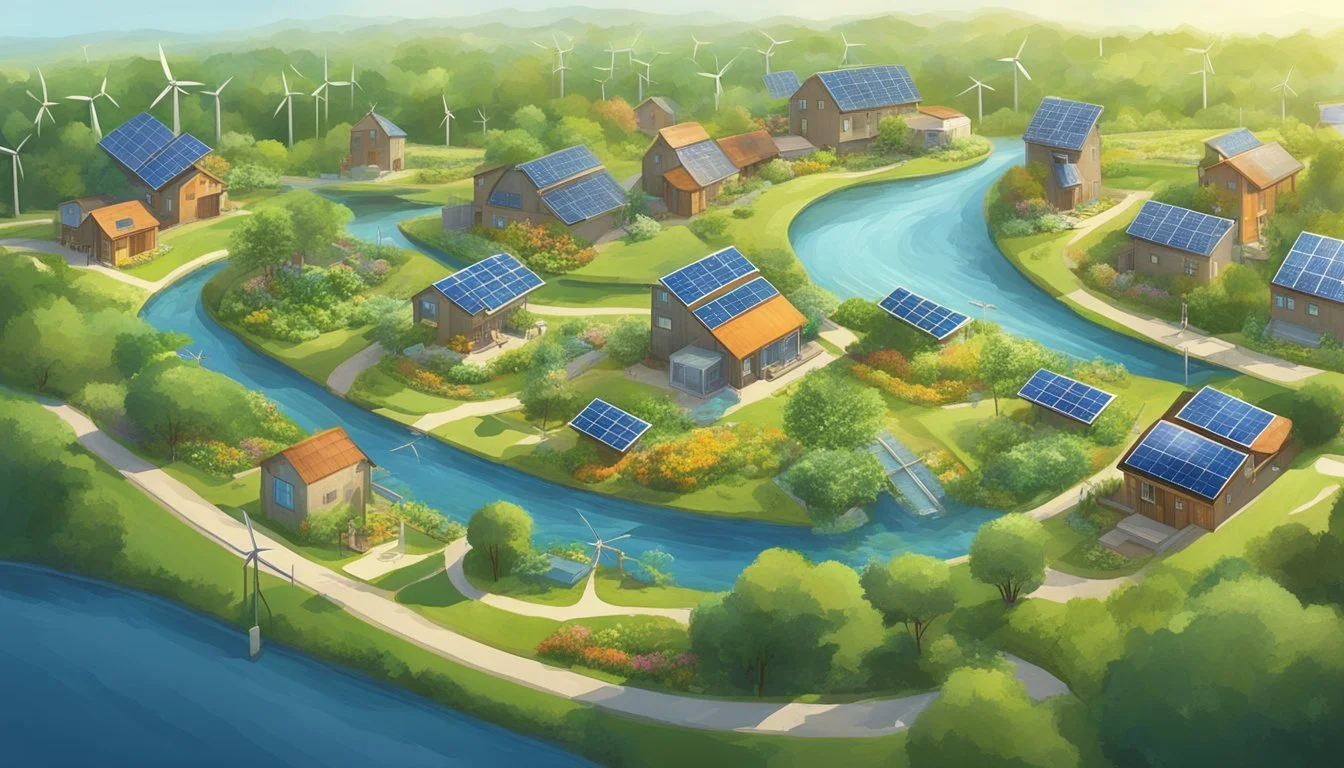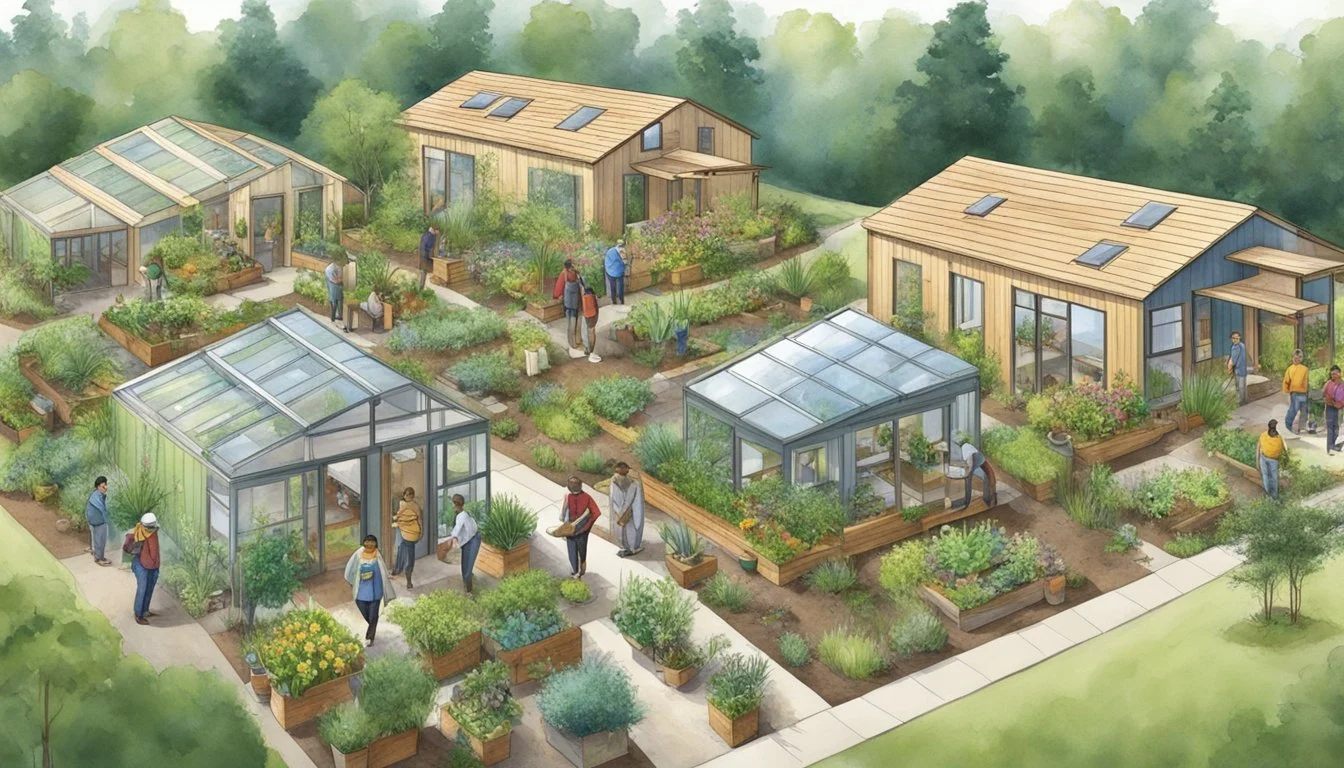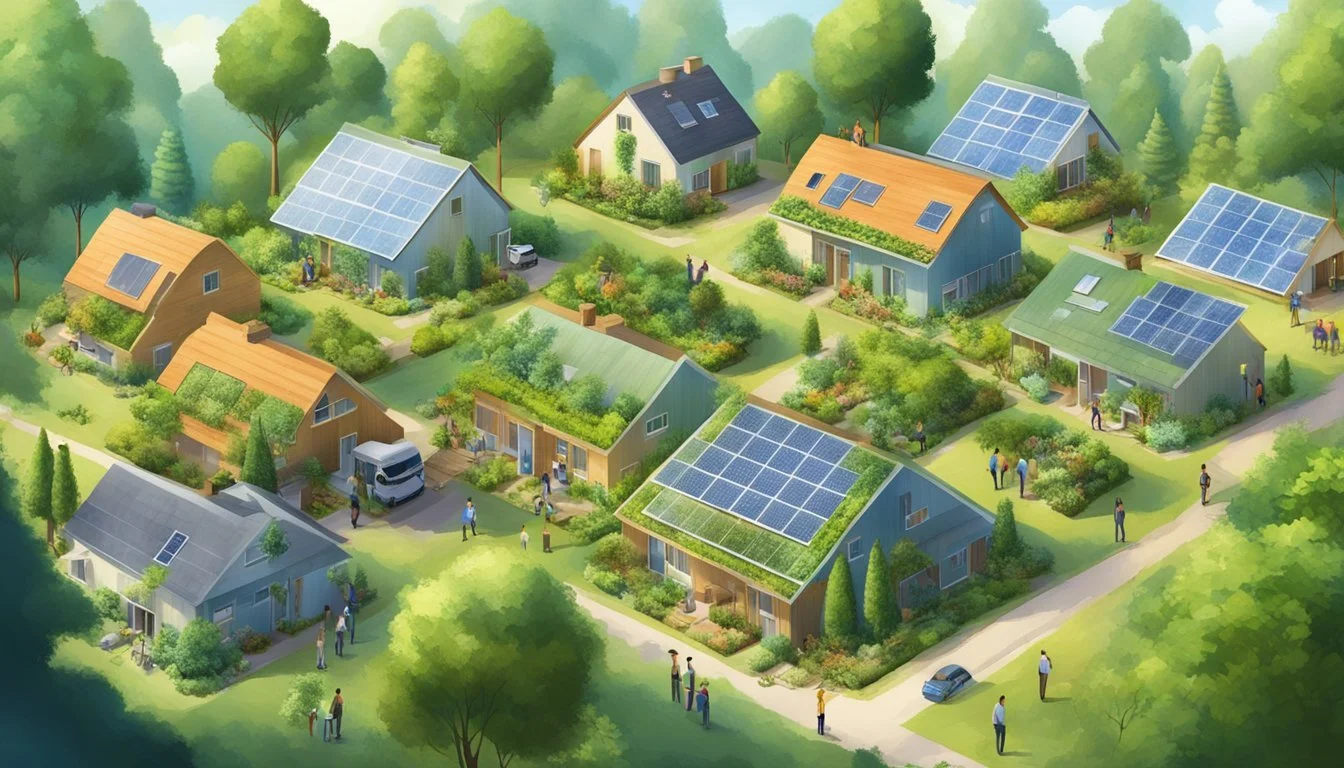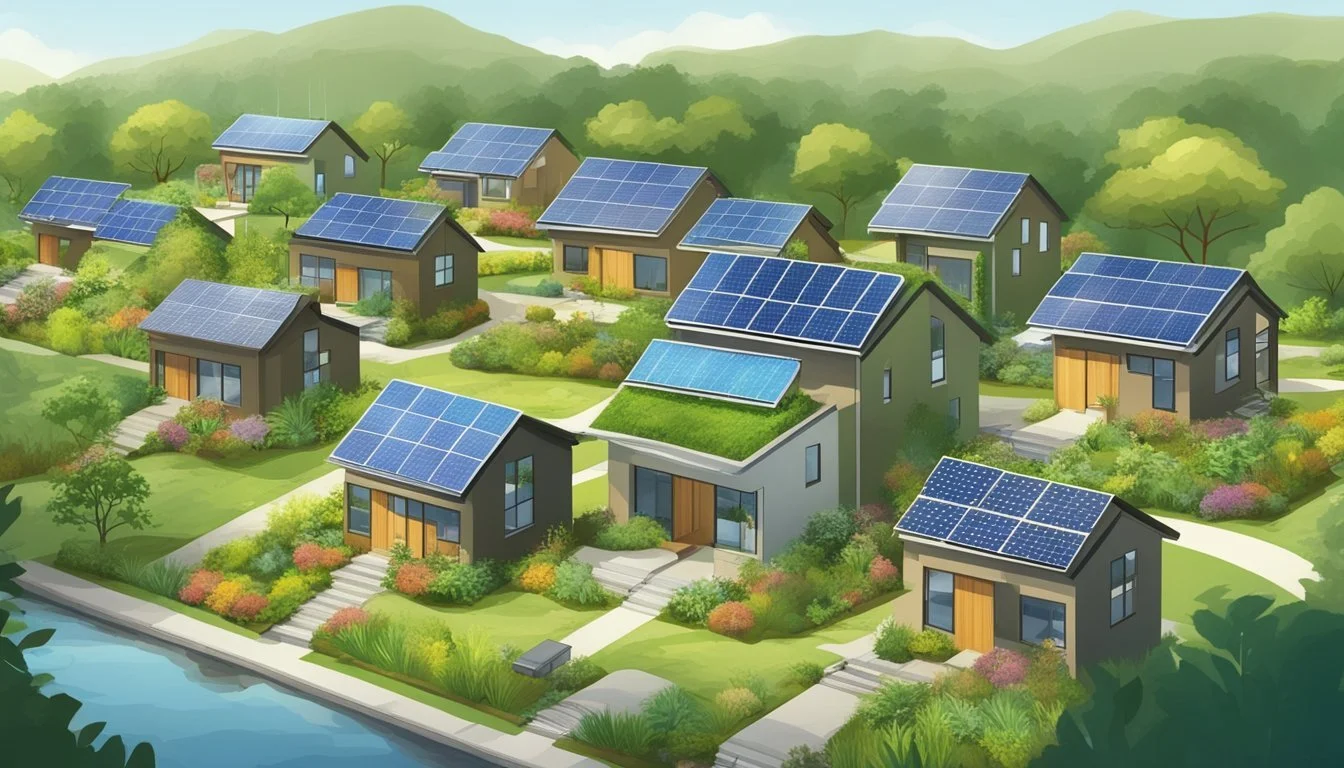Free Land and Sustainable Living
Creating Thriving Eco-Friendly Communities
Free land and sustainable living are concepts gaining momentum as individuals and communities seek eco-friendly ways to coexist with the environment. Harnessing communal efforts and sustainable practices, these communities are revolutionizing the way people live, offering a blueprint for a harmonious balance with nature. Off-the-grid communities like Emerald Earth in California and the Sawyer Hill EcoVillage in Massachusetts illustrate the potential for shared resources, sustainable architecture, and minimal environmental impact.
These eco-villages not only provide a sanctuary for like-minded neighbors but also foster a deep connection with nature. Residents share responsibilities, such as maintaining communal gardens and using renewable energy sources, which reduces the carbon footprint and promotes a self-sufficient lifestyle. The focus on sustainability ensures that these communities can thrive without depleting natural resources.
The appeal of such living arrangements lies not only in their environmental benefits but also in the quality of life they offer. Members of these communities often report stronger social ties and an enhanced sense of well-being. By living sustainably and in harmony with their surroundings, these eco-friendly communities highlight a path toward a more sustainable future for everyone.
The Fundamentals of Sustainable Living
Sustainable living entails adopting methods and practices that minimize damage to the environment while promoting resource conservation and well-being.
Understanding Sustainability
Sustainability involves meeting current needs without compromising future generations' ability to meet their own. It emphasizes balance between environmental health, economic viability, and social equity. Critical aspects include the use of renewable energy sources such as solar and wind power, effective water conservation methods, and reducing dependence on fossil fuels.
A key element is reducing waste by reusing, recycling, and composting. Efficient resource use — like opting for locally sourced materials and products — significantly lowers the environmental footprint. Sustainable agriculture practices, including crop rotation and organic farming, bolster this balance by maintaining soil health and reducing chemical use.
Principles of Sustainable Development
Sustainable development hinges on several core principles:
Environmental Protection: Preserving ecosystems and biodiversity through efforts such as reforestation and pollution control is essential. This includes maintaining natural habitats and protecting endangered species.
Economic Viability: Initiatives should be economically sustainable. Investments in green technologies and renewable energy systems can provide long-term economic benefits. Additionally, promoting eco-friendly businesses supports local economies and reduces carbon footprints.
Social Equity: Emphasizing fair distribution of resources ensures that everyone benefits from sustainable practices. This includes ensuring access to clean water, nutritious food, and healthcare. Educating communities about sustainable practices fosters inclusive participation.
Technological Innovation: Leveraging advancements in technology can accelerate the transition to sustainability. Examples include smart grids, energy-efficient appliances, and sustainable urban design, which reduces energy consumption and enhances quality of life.
By adhering to these principles, communities can build a resilient and sustainable future, ensuring the well-being of both people and the planet.
Planning for Sustainability
Effective planning for sustainability involves designing eco-friendly communities and integrating renewable energy sources. This ensures a balanced approach to minimize environmental impact while promoting sustainable living.
Designing Eco-Friendly Communities
Eco-friendly community design focuses on minimizing resource use and reducing pollution. Planners and designers often use passive solar techniques, which maximize natural light and reduce energy consumption.
Zoning regulations can promote mixed-use developments. This reduces the need for transportation by allowing people to live, work, and play in the same area. Walkable neighborhoods decrease reliance on cars, lowering greenhouse gas emissions.
Green spaces are essential. Parks, gardens, and trees improve air quality and provide areas for recreation. They also support biodiversity by creating habitats for local wildlife.
Using sustainable building materials is another key aspect. Materials like reclaimed wood, recycled steel, and low-VOC paints contribute to healthier indoor environments and reduce the ecological footprint.
Integrating Renewable Energy Sources
Incorporating renewable energy is critical for sustainable living. Solar panels and wind turbines can be installed on homes and community buildings to generate clean energy.
Passive solar design is another strategy. Buildings are oriented and constructed to naturally regulate temperature, reducing the need for heating and cooling.
Community-wide initiatives like shared solar farms and microgrids can distribute renewable energy efficiently. These systems increase energy security and reduce dependence on fossil fuels.
Education and engagement are also important. Community programs can teach residents about energy conservation and the benefits of renewable sources. This fosters a culture of sustainability and empowers individuals to make eco-friendly choices.
Types of Sustainable Communities
Exploring types of sustainable communities reveals unique approaches to living that prioritize environmental stewardship, self-sufficiency, and communal living. These communities represent diverse models but share core principles such as resource-sharing, sustainability, and intentional living.
Ecovillages
Ecovillages are intentional communities designed to be socially, economically, and ecologically sustainable. These settlements often incorporate renewable energy sources like solar and wind power, and emphasize organic farming and permaculture techniques.
Community members typically share resources such as gardens, workshops, and communal spaces. Ecovillages prioritize low-impact living, and may feature sustainable architecture using natural and recycled materials.
Many ecovillages, like those mentioned on Treehugger, operate on a cooperative basis, allowing residents to invest in and help manage the community.
Cohousing Models
Cohousing communities emphasize collaboration and shared resources while allowing for private homes and individual autonomy. These models originated in Denmark and have spread globally.
Each household owns a private residence but shares common facilities such as kitchens, laundry rooms, and recreation areas.
The Sawyer Hill EcoVillage in Massachusetts is a merger of two such cohousing groups, as highlighted by Treehugger. This model fosters a strong sense of community due to frequent social interactions and shared responsibilities, from maintenance to event organization.
Residents often engage in collective decision-making, ensuring that the communal goals align with sustainability principles.
Off-the-Grid Communities
Off-the-grid communities seek to be self-sufficient by disconnecting from public utilities and infrastructure. They rely on renewable energy sources such as solar panels, wind turbines, and sometimes even hydropower.
Living off the grid means cultivating self-reliance through practices like rainwater harvesting, composting, and growing food locally.
An example provided by Treehugger is Emerald Earth in California, where residents engage in shared activities and live in eco-friendly structures. These communities often appeal to those looking to minimize their environmental footprint and embrace a more sustainable lifestyle.
By focusing on these different types of sustainable communities, individuals can gain insights into the diverse ways people are creating eco-friendly and socially sound living environments. Each type offers unique benefits and can be tailored to meet the varied needs and values of its members.
Notable Sustainable Communities Worldwide
Across the globe, various communities are taking innovative approaches to sustainable living. These models stand out for their dedication to renewable energy, communal resources, and ecological mindfulness.
Dancing Rabbit Ecovillage
Dancing Rabbit Ecovillage, located in northeastern Missouri, exemplifies environmental stewardship. Founded in 1997, this community strives for a minimal ecological footprint.
Residents live in eco-friendly homes powered by renewable energy sources like wind and solar. The village practices rainwater harvesting and relies on sustainable agriculture. Compact design ensures most amenities are within walking distance, reducing the need for cars.
Members share facilities such as kitchens and bathrooms, fostering a sense of community while conserving resources. Dancing Rabbit is also a member of the Global Ecovillage Network.
Earthaven and Asheville Models
Earthaven Ecovillage, nestled in the Blue Ridge Mountains of North Carolina, began in 1994. It emphasizes permaculture principles and off-grid living. Residents build homes using natural materials, such as straw bales and cob.
The community relies on solar and hydroelectric power while practicing organic farming and forest gardening. Earthaven's educational programs attract visitors interested in sustainable practices.
Nearby Asheville offers urban sustainability examples. The city has numerous green initiatives, including a local food movement and extensive recycling programs. Community gardens and renewable energy projects contribute to Asheville's eco-friendly reputation.
International Examples
Internationally, sustainable communities vary in approach but share common goals.
Emerald Earth in California operates on permaculture principles, sharing resources among its residents. Meanwhile, Eco Truly Park in Peru incorporates spiritual practices into its sustainable lifestyle, with homes built in artistic conical shapes.
The Farm in Tennessee, established in the 1970s, focuses on communal living and self-reliance through organic farming and renewable energy.
Crystal Waters in Australia is notable for its integration of wildlife sanctuaries with human habitation, receiving accolades like the World Habitat Award. These communities, supported by networks such as the Global Ecovillage Network, reflect diverse and effective strategies for sustainable living.
Building Sustainable Living Spaces
Sustainable living spaces incorporate eco-friendly construction methods, integrate natural systems, and promote community resource sharing. Each element works harmoniously to reduce environmental impact while fostering a collective approach to resource management.
Eco-Friendly Construction
Eco-friendly construction emphasizes the use of materials and methods that minimize environmental harm. Sustainable architecture often includes features like:
Renewable energy sources: Solar panels and wind turbines
Energy-efficient designs: Insulation, high-efficiency windows
Recycled and locally-sourced materials
These practices help to lower the carbon footprint of buildings and promote a healthier environment. Smart building designs, like passive solar heating and green roofs, also play a role in reducing energy needs and managing water runoff.
Natural Systems Integration
Integrating natural systems into living spaces is crucial for sustainability. This involves using elements of the natural environment to enhance building efficiency:
Rainwater harvest systems can provide water for irrigation and non-potable uses.
Green walls and roofs offer insulation and improve air quality.
Natural landscaping can reduce the need for water and chemical inputs.
Combining these systems with advanced technologies can create self-sustaining living environments. For instance, bioswales manage stormwater, reducing the load on municipal systems while replenishing groundwater.
Community Resource Sharing
A sustainable community stands stronger through shared resources. Community resources can include:
Community gardens: Providing fresh, local produce
Shared facilities: Tool libraries, communal spaces
Renewable energy sources: Community-owned solar and wind installations
This approach not only reduces individual consumption and waste but also builds a sense of togetherness and mutual support. Shared transportation options, like bike-sharing programs, further contribute to sustainable living by reducing reliance on fossil fuels.
By focusing on these key areas, sustainable living spaces can create an eco-friendly, self-sufficient, and connected community.
Energy Solutions for Eco-Communities
Eco-communities rely on renewable energy sources to minimize their environmental impact and reduce dependence on fossil fuels. Solar panels and wind turbines are key technologies used for generating electricity sustainably.
Harnessing Solar and Wind Energy
Solar panels are crucial for eco-communities. They convert sunlight directly into electricity, reducing reliance on non-renewable energy sources. Panels can be installed on rooftops, in open spaces, or integrated into building materials. Residents benefit from lower energy costs and increased energy independence.
Wind turbines complement solar energy by generating power when sunlight is insufficient. Small-scale turbines can be installed within communities to harness wind energy, providing a consistent electricity supply. This combination ensures a reliable energy system throughout different weather conditions.
Innovations in Renewable Energy
Renewable energy technologies are continually advancing. Biodiesel is becoming a popular alternative for diesel generators within off-grid communities. Its production from organic materials makes biodiesel a cleaner option.
Smart grid systems optimize energy distribution and storage, ensuring efficiency. They allow for better management of renewable energy sources, integrating solar and wind power seamlessly. Innovations like battery storage also play a critical role, storing excess energy for use during low production periods, enhancing community resilience.
Sustainable Economic Models
Sustainable economic models focus on minimizing environmental impact while promoting community resilience and self-sufficiency. These models often integrate traditional practices with innovative approaches to meet the needs of modern living.
Bartering and Localized Economies
Bartering is a time-tested economic model that fosters community engagement and reduces dependency on external markets. Instead of currency, goods and services are exchanged directly. Bartering can include items like locally harvested firewood or artisanal products. This type of economy enhances resourcefulness and waste reduction. Localized economies promote the use of local resources, thereby reducing transportation emissions and encouraging sustainable living.
Small-scale farmers trading produce, craftsmen exchanging handmade goods, and neighbors trading skills, such as carpentry for childcare, are common practices. By focusing on local production and consumption, these economies support local businesses and create a resilient community structure.
Sustainable Tourism
Sustainable tourism integrates eco-friendly practices into the travel industry, aiming to minimize the environmental footprint while benefiting local communities. Visitors are encouraged to engage in eco-tourism activities that promote environmental education and conservation efforts. Staying in eco-friendly lodges, participating in tree-planting activities, and using local guides are examples.
Eco-friendly tourism reduces strain on natural resources by promoting activities that are in harmony with the environment. It also provides economic benefits to local communities, offering employment and fostering cultural exchange. Destinations like Eco Truly Park in Peru illustrate how sustainable tourism can create thriving, self-sustaining communities that value cultural and environmental preservation.
Social Dynamics and Education
Social dynamics and education are critical in fostering eco-friendly communities. These elements help individuals engage meaningfully within their surroundings and extend their knowledge to influence broader circles.
Community Engagement and Education
Community engagement involves active participation in local projects, which helps individuals develop practical skills. Educational programs and workshops are vital in this process. These initiatives range from permaculture training to renewable energy systems.
Such programs often collaborate with academics to ensure accuracy and relevance. Local schools and universities may offer courses on sustainability. This integration of education and action equips residents with the skills needed for sustainable living.
Networking and Outreach
Networking and outreach efforts function as the backbone of sustainable communities, facilitating the exchange of ideas and resources. Ecovillages and other similar communities often organize events like conferences and webinars.
These activities aim to connect like-minded individuals and organizations. Social media and online platforms serve as crucial tools for extending outreach. Community members share best practices and success stories, thereby creating a larger impact beyond their immediate environment.
Challenges and Environmental Stewardship
Building eco-friendly communities comes with its unique set of challenges, especially in terms of environmental stewardship. These communities must address immediate issues like climate change and effective waste management practices to ensure a sustainable future.
Addressing Climate Change
Climate change presents a significant challenge for eco-friendly communities. They must transition to renewable energy sources, such as solar and wind power, to reduce carbon footprints. Energy-efficient buildings play a crucial role, utilizing advanced insulation, passive solar heating, and sustainable materials.
Local governments and communities work together to implement green infrastructure, such as green roofs and rain gardens, to enhance resilience against extreme weather events. Integrating electric vehicle charging stations and promoting public transportation are additional steps towards a low-carbon future.
Waste Management
Proper waste management is essential for these communities to minimize environmental impact. Emphasis is placed on recycling programs that reduce plastic pollution and landfill waste. Efforts to compost organic waste and use it for community gardens add another layer of sustainability.
Residents are encouraged to adopt a zero-waste lifestyle through educational programs and initiatives. Local policies often support the reduction of single-use plastics and the promotion of reusable alternatives. Effective waste segregation systems ensure that recyclables, compostables, and non-recyclables are processed correctly, fostering a cleaner, healthier environment.
Looking Forward: The Future of Eco-Communities
As eco-communities advance, innovation in sustainable living and proactive environmental efforts such as reforestation will shape their development. These initiatives promise a significant impact on how communities interact with and nurture their environments.
Innovative Projects and Laboratory Models
Future eco-communities will benefit from cutting-edge projects and experimental models designed in laboratories. Researchers are developing technologies aimed at energy efficiency, waste reduction, and water conservation.
Eco-friendly materials that minimize environmental impact are in focus. These materials often derive from recycled resources or sustainable sources, reducing the carbon footprint. Smart grids powered by renewable energy sources like solar and wind also feature prominently in these prototypes, promoting self-sufficiency and energy independence.
Additionally, integrating smart technology will help manage resources efficiently. For instance, IoT (Internet of Things) devices will monitor and optimize energy usage, while automated systems handle waste and water management.
Expansion and Reforestation Initiatives
Expansion of eco-communities will often pair with reforestation and land conservation efforts. This dual approach aims to create greener, more resilient environments that support biodiversity. Reforestation involves planting native trees and vegetation that contribute to a balanced ecosystem.
Land conservation plays a vital role in preserving natural habitats and preventing urban sprawl. Eco-communities might include green spaces such as parks, community gardens, and green roofs—areas that also serve as communal gathering spots.
Projects aiming to conserve 30% of land, water, and seas by 2030 align with these community expansions. Such efforts help restore degraded ecosystems and ensure sustainable land use, contributing positively to both local environments and the global climate.
Case Studies and Best Practices
Dancing Rabbit Ecovillage focuses on sustainability through shared resources and eco-friendly practices. Located in Missouri, it emphasizes solar energy, composting toilets, and communal living spaces. The community has managed to reduce its ecological footprint significantly.
Earthaven Ecovillage, in North Carolina, integrates permaculture principles into its design. They use natural building techniques such as cob and straw-bale construction. Renewable energy sources, like solar and hydro-power, are pivotal to their operations.
Twin Oaks Community in Virginia is known for its egalitarian structure. Members contribute to various communal tasks and receive a share of the income generated. Key practices include organic farming, tofu production, and furniture building.
Ecovillage at Ithaca in New York combines sustainable architecture with social well-being. The village includes energy-efficient homes, shared community spaces, and organic gardens. They also conduct educational workshops to promote sustainable living.
Best Practices Table
Ecovillage Key Practices Dancing Rabbit Solar energy, composting toilets Earthaven Permaculture, cob and straw-bale Twin Oaks Organic farming, communal tasks Ecovillage at Ithaca Energy-efficient homes, workshops
These case studies illustrate various successful approaches to sustainable living. Each community employs unique methods to create an eco-friendly environment. Examples like these provide valuable insights into effective practices for building sustainable communities.
Additional Resources and Further Reading
For those interested in free land and sustainable living, the following resources offer valuable information and guidance:
Books
The Sustainable Guide to Resilient Communities by Daniel Green
Eco-Villages: Building Sustainable Communities by Karen Reynolds
Websites
Treehugger: Offers articles and tips on creating sustainable communities.
The Ecovillage Network: A global association dedicated to fostering resilient community living.
Articles
20 Practical Steps for Eco-Friendly Living: A comprehensive guide on sustainable practices.
Eco-building for Eco-living: Discusses the benefits of bio-sourced materials and adaptable spaces.
Organizations
Global Ecovillage Network (GEN): Provides resources and support for starting your own ecovillage.
Earthship Biotecture: Conducts workshops on building self-sufficient homes with recycled materials.
Workshops and Courses
Permaculture Design Course: Look for local or online options to learn about sustainable land use.
Earthship Academy: An intensive program that covers the fundamentals of sustainable architecture.
Online Forums and Communities
Permies: A forum community discussing everything from permaculture to sustainable construction.
Reddit’s r/SustainableLiving: A place to share tips and advice on eco-friendly living.
These resources can help individuals make informed decisions and foster a greater understanding of sustainable living and eco-friendly communities.

